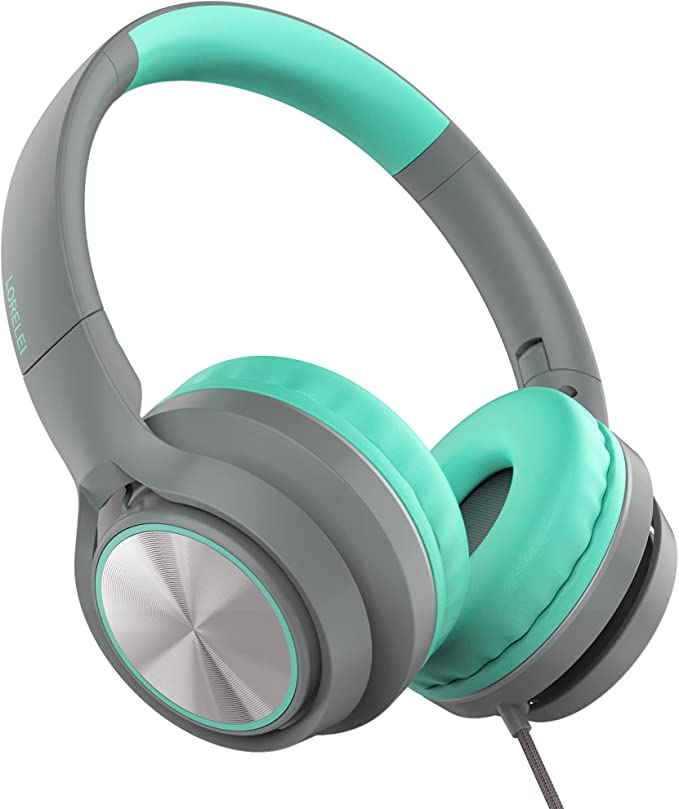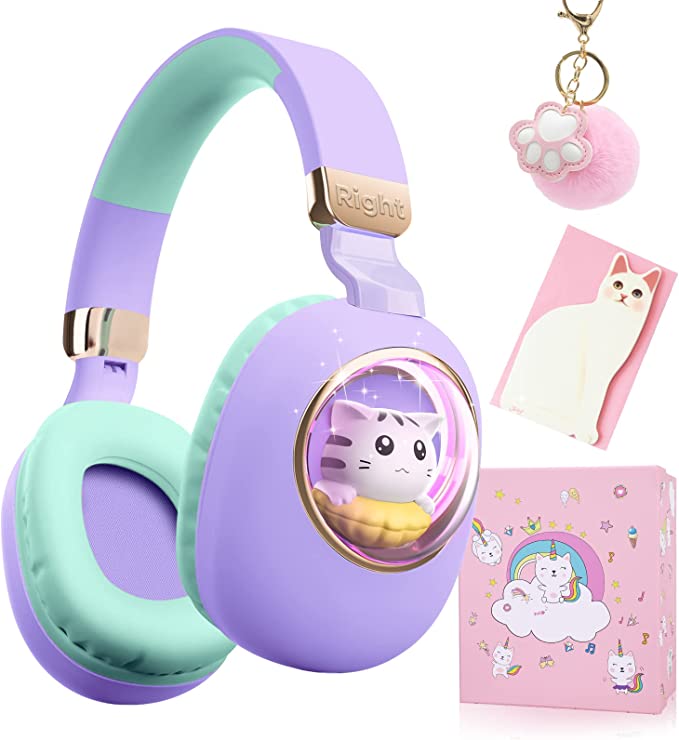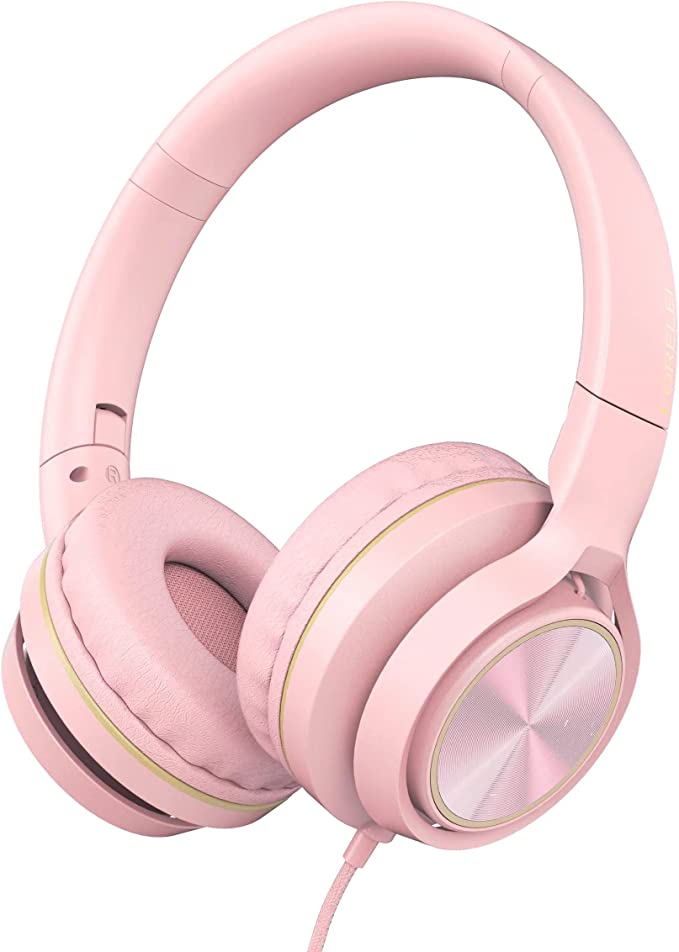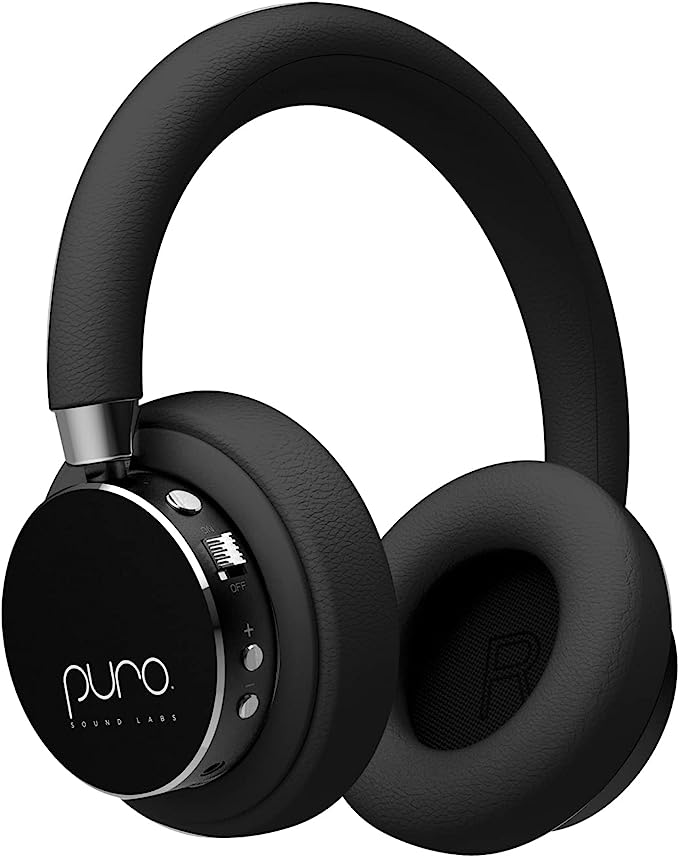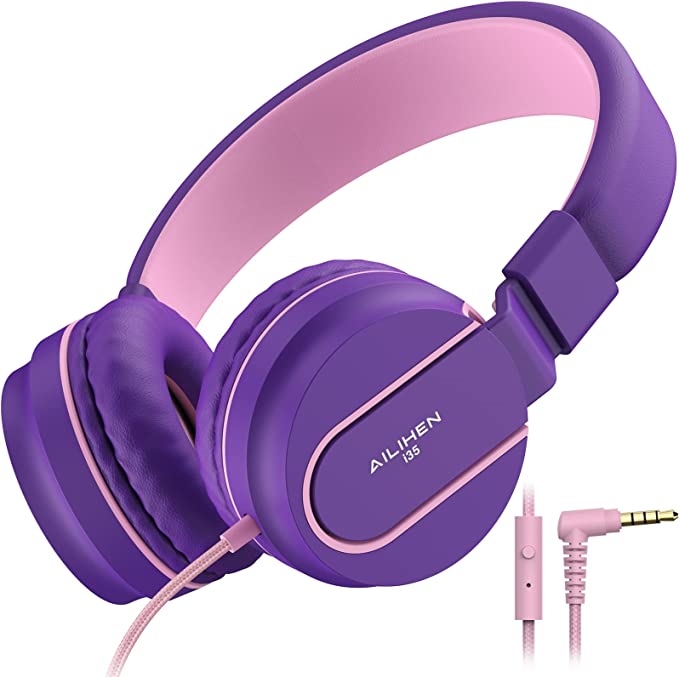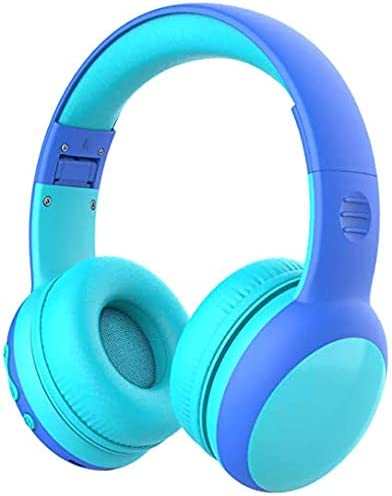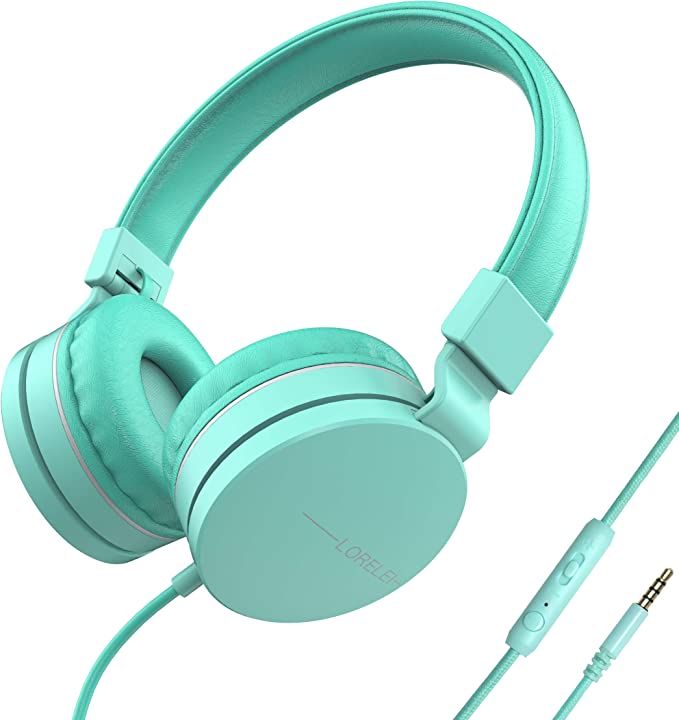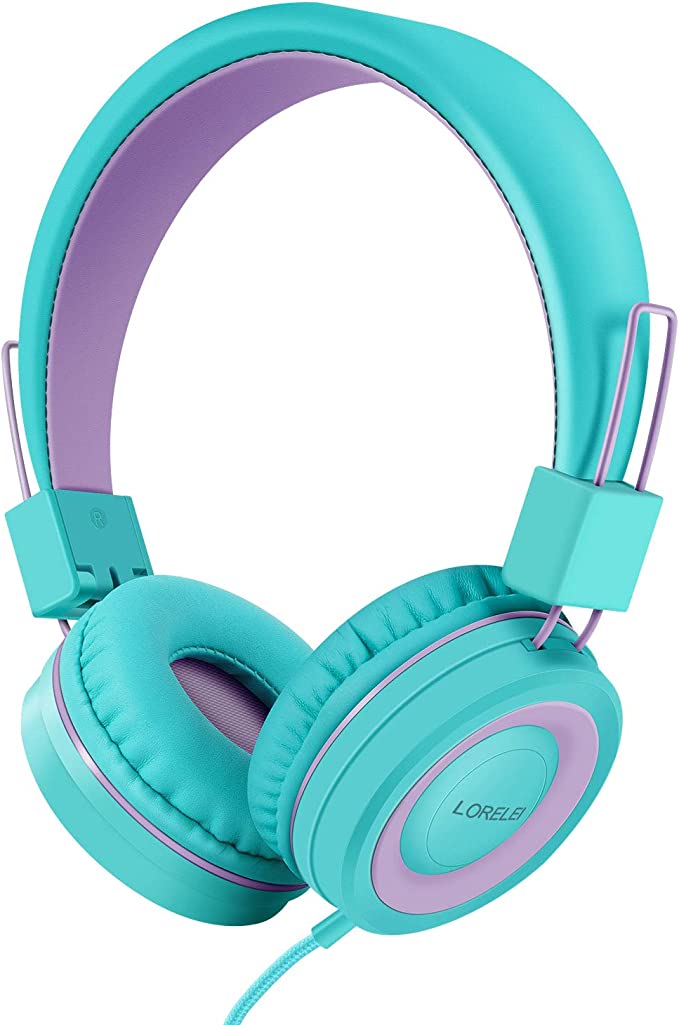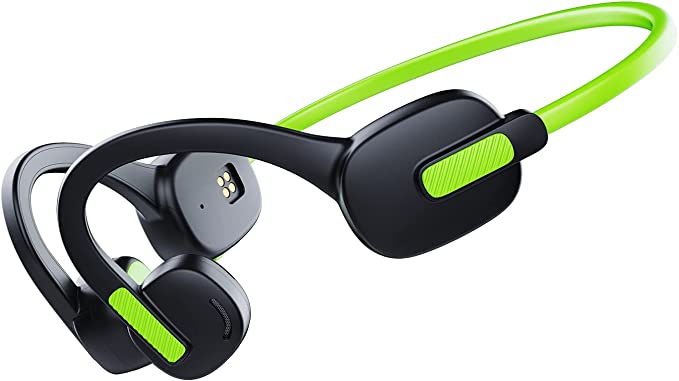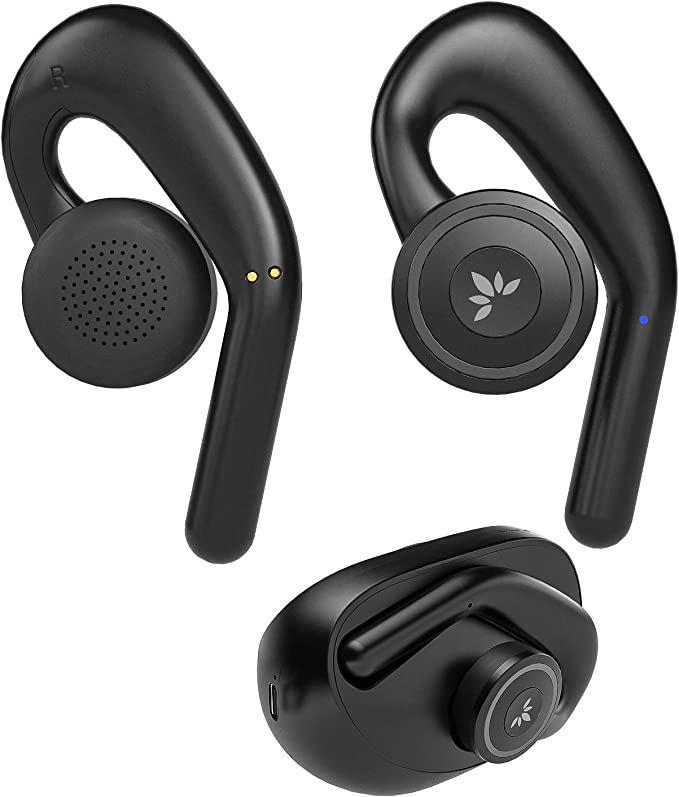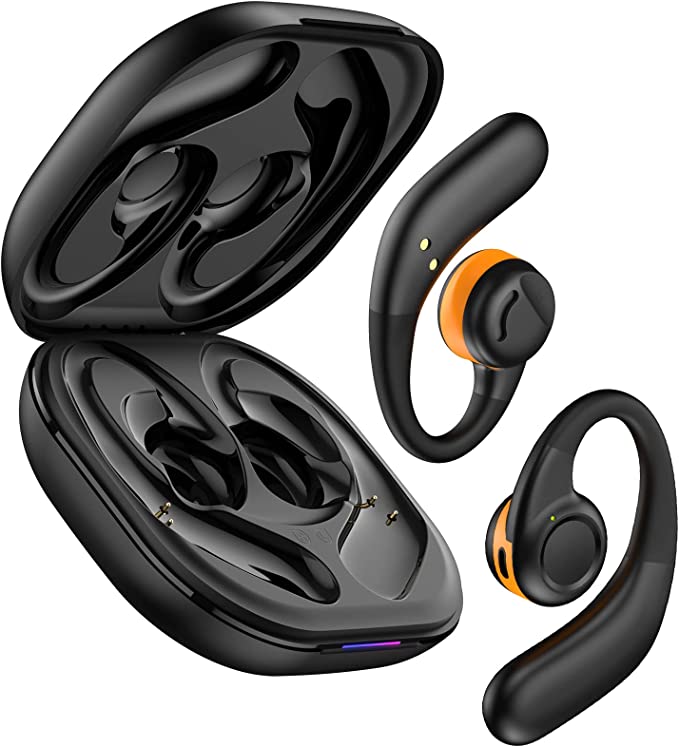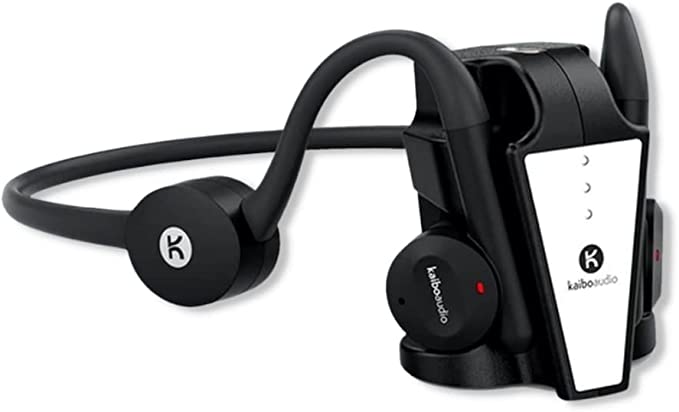Riwbox CT-7S: Safe and Fun Headphones for Kids | Volume Limiting
Update on Aug. 24, 2025, 4:08 p.m.
It’s a familiar scene in countless modern homes: a child, utterly absorbed in the glowing world of a tablet, a colorful pair of headphones cupping their ears. They’re exploring a digital jungle, building a virtual city, or video-calling a grandparent. There is peace. There is learning. But in that quiet, a silent question often surfaces in a parent’s mind: Is this safe? The concern isn’t just about screen time; it’s about something far more delicate and invisible—the precious, irreplaceable gift of hearing.
This question deserves more than a simple yes or no. It calls for a journey—a journey into the microscopic marvel of the human ear, a deep dive into the physics of sound, and a practical deconstruction of the technology designed to protect it. Using the Riwbox CT-7S, a popular set of cat-ear headphones for kids, as our case study, we will strip away the marketing and explore the science and engineering of hearing safety. This isn’t just a review; it’s a guide to understanding the principles that empower you to protect your child’s auditory future.

The Unseen Symphony: A Journey Into the Ear
Before we can protect hearing, we must first appreciate its incredible fragility. Think of the ear as the most sophisticated microphone and processing system ever created. When a sound wave—a vibration traveling through the air—reaches the ear, it first strikes the eardrum, causing it to vibrate. These vibrations are then amplified by three of the tiniest bones in the human body before being transferred to the cochlea.
The cochlea, a spiral-shaped chamber in the inner ear, is where the true magic happens. It’s filled with fluid and lined with around 15,000 microscopic hair cells. These are not ordinary hairs; they are exquisitely sensitive nerve cells. As the fluid vibrates, these hair cells dance, converting the mechanical energy of sound into electrical signals. These signals are then sent along the auditory nerve to the brain, which interprets them as laughter, music, or a spoken word.
Here is the critical, unyielding fact: these hair cells do not regenerate. Unlike skin that heals or bones that mend, once a hair cell is damaged or destroyed, it is gone forever. This is the biological basis of Noise-Induced Hearing Loss (NIHL), a silent epidemic that chips away at the spectrum of sound one can perceive. The damage is cumulative, permanent, and, most importantly, entirely preventable.

Decoding the Danger: The Science of Decibels
So, how loud is too loud? The scientific and medical communities have largely coalesced around a key number: 85 decibels (dB). This isn’t an arbitrary figure; it comes from decades of research in occupational health by organizations like the National Institute for Occupational Safety and Health (NIOSH). They found that prolonged exposure to noise levels above 85 dB—the average sound of heavy city traffic—can begin to cause permanent damage.
What makes this even more critical to understand is that the decibel scale is logarithmic, not linear. This means a small increase in number represents a massive leap in sound intensity. A sound at 95 dB is not just a little louder than 85 dB; it is ten times more intense. A sound at 105 dB is a staggering one hundred times more intense.
Children are uniquely vulnerable. Their ear canals are smaller than adults’, which can actually amplify certain sound frequencies, making them effectively louder. Furthermore, they lack the life experience to recognize when a volume is dangerously high or the self-regulation to turn it down. They are guided by what is fun and engaging, not what is safe. This is where thoughtful engineering must step in.

Anatomy of a Safeguard: Inside the Riwbox CT-7S
A product like the Riwbox CT-7S is more than just a pair of speakers in a plastic shell; it’s an engineered system with layers of design choices aimed at mitigating these risks. Let’s deconstruct it.
The Governor on the Sound Highway: 85dB Volume Limiting
The most crucial feature is the built-in 85dB volume limiter. This is not a software setting that can be accidentally bypassed. It’s a physical, electronic component. Deep within the headphone’s circuitry is a simple but effective tool: a resistor. Governed by the principles of Ohm’s Law, this resistor restricts the amount of electrical current that can flow to the 40mm speaker drivers. By capping the power, it physically prevents the speakers from producing sound pressure levels that exceed the 85dB safety threshold, no matter how high the volume is cranked on the connected tablet or phone. It’s the equivalent of a permanent governor on a car’s engine, ensuring it never reaches a dangerous speed.
The Unsung Hero: Passive Noise Isolation
Before a child even thinks about volume, the headphones are already working to help. The over-ear design of the CT-7S creates a physical seal around the ear. This design provides passive noise isolation—it physically blocks a portion of the ambient sound from the outside world. This is a subtle but vital safety feature. In a noisy environment like a car or an airplane, a child’s first instinct is to turn the volume up to drown out the background noise. By quieting the environment first, the over-ear cups reduce this temptation, making it possible to enjoy clear audio at a lower, safer volume.

The Balancing Act of Design
Of course, no product exists in a vacuum. Every design is a series of trade-offs, and understanding them provides a more complete picture.
- Material Choice: The headphones are made primarily of Acrylonitrile Butadiene Styrene (ABS) plastic. This material is ubiquitous in consumer electronics for good reason: it’s lightweight, relatively strong, and cost-effective. The light weight is critical for a child’s comfort. However, as some user feedback indicates, this can come at the cost of ultimate durability. A user noted the headband hinge broke after being stretched excessively wide by a toddler. This doesn’t necessarily indicate a faulty product, but rather a design trade-off. The material chosen for comfort and affordability has inherent limits to the stress it can withstand, highlighting the importance of teaching children to handle their devices with care.
- Connectivity: The inclusion of Bluetooth 5.0 offers a stable, power-efficient wireless connection, minimizing frustrating drop-outs for a child. Yet, the designers also included a detachable 3.5mm audio cable. This is a nod to real-world practicality—for use on airplanes, with older devices, or when the 30-hour battery finally runs dry. While some users have noted that re-pairing the Bluetooth between multiple devices can sometimes be tricky—a common quirk in many wireless audio products—the wired option provides a foolproof backup.
The Trojan Horse of Fun
Finally, one cannot ignore the glowing cat ears and vibrant colors. While seemingly frivolous, this playful aesthetic is arguably one of the most important safety features. The most advanced safety device in the world is useless if a child refuses to use it. The fun factor—the LED lights that can be turned on or off, the cartoonish theme—ensures a child’s buy-in. It transforms a protective apparatus into a fun accessory they want to wear. This emotional and psychological design element is what bridges the gap between a parent’s intention and a child’s willing adoption.
Beyond the Hardware: A Parent’s Toolkit for Auditory Wellness
Technology, no matter how well-designed, is only a tool. The ultimate defense for your child’s hearing is the cultivation of healthy habits. The right headphones are a fantastic start, but they should be part of a broader strategy for digital wellness.
- Embrace the 60/60 Rule: A great guideline recommended by many audiologists is to listen for no more than 60 minutes at a time, at no more than 60% of the device’s maximum volume. Encourage regular listening breaks.
- Use Device-Level Limits: Your smartphone, tablet, and computer all have built-in settings to cap the maximum volume. Use them. This creates a second layer of defense, a safety net for your safety net.
- Be Alert to the Signs: Know the early signs of potential hearing difficulty in a child. These can include turning the TV volume up excessively, frequently asking “what?”, having difficulty understanding speech in noisy rooms, or complaining of a ringing or buzzing sound (tinnitus).
In the end, our goal as parents is not to shield our children from the modern world, but to give them the tools and habits to navigate it safely. Protecting their hearing is a profound investment in their future—in their ability to learn, to communicate, and to experience the full, rich symphony of life. By understanding the delicate science of their ears and the thoughtful engineering of the tools they use, we can ensure the soundtrack of their childhood is one of wonder, not one that fades to silence.

